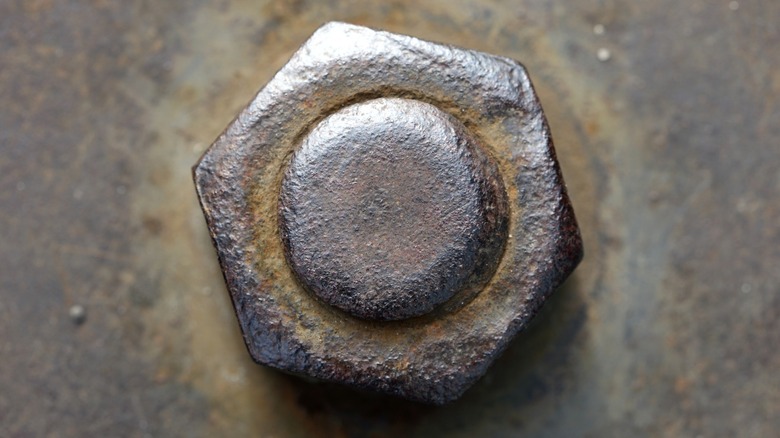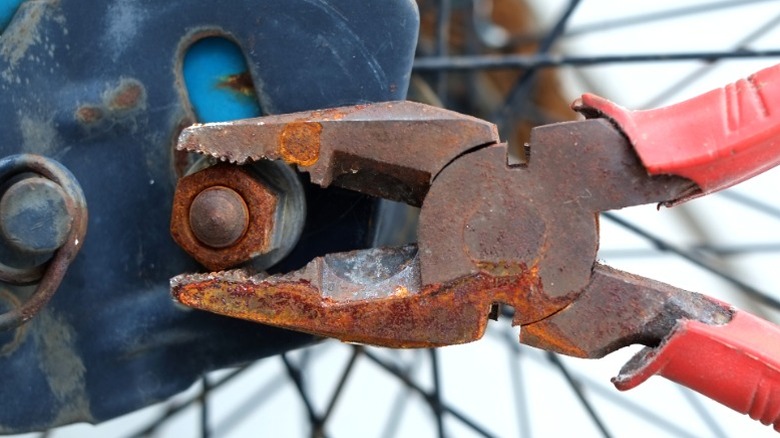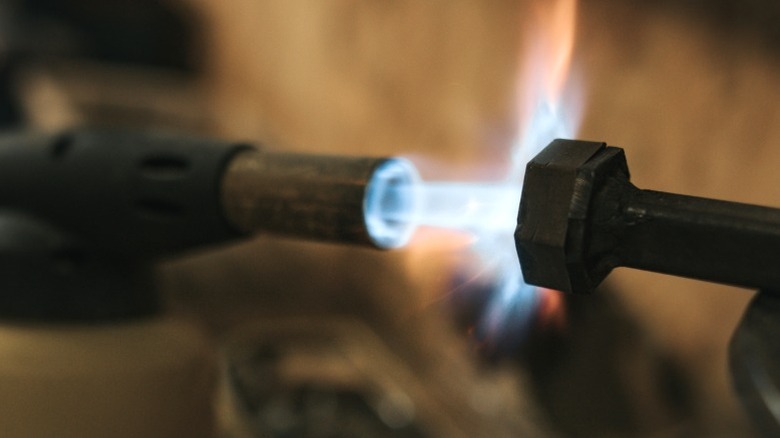Handy Tools For Removing Rusted Bolts Without A Nut Splitter
We may receive a commission on purchases made from links.
At one point or another, you're bound to encounter a rusted bolt during a household DIY, bringing any progress on your project to a screeching halt. You pull out your essential homeowner toolkit only to find your standard pliers can't find a grip and get it to turn, leaving you scratching your head over your next move. Do you need to go the whole nine yards with a tool like a nut splitter? While that may be a surefire solution in some situations, you may not like the idea of spending time and money getting a specialty tool for the job.
It doesn't have to be that way, though. Speaking exclusively with House Digest, home remodeler and carpentry expert Bob Beacham detailed techniques for removing rusted nuts and bolts without a nut splitter, starting with a rust-busting oil lubricant like WD-40 or PB Blaster. "If you haven't done so, first spray with penetrating oil. Leave it for 20 to 30 minutes. An ordinary spanner or socket wrench might then work," Beacham states, adding, "An old trick is to hit the head of the nut with a hammer a few times. Sometimes it helps to loosen it." Our expert also suggests gaining leverage by fitting a metal pipe over your wrench handle to lengthen it, creating a DIY breaker bar. Otherwise, an impact wrench can apply extra force, though you'll need appropriate impact sockets. Keep in mind that if you're using it on a rusted bolt head, it may shear the head off, making the bolt harder to remove.
Pro tips to safely remove stubborn rust bolts
While sockets can help with rusted but otherwise undamaged nuts and bolts, you may need a different approach when they're rounded down and hard to grip. "If the head is damaged so a socket or wrench won't fit properly, you can use a bolt extractor. These are screwed into the bolt, providing a new surface for a socket or wrench," Bob Beacham discusses in his exclusive House Digest interview. This REXBETI 41-Piece Bolt Extractor Set is a good option if you choose to go that route.
"Vise grips could also work on damaged heads," Beacham states. He adds that, unfortunately, bolt extractors and vice grips are better for damaged bolts rather than rust, as they don't provide more leverage than a standard wrench. He explains a cold chisel could also work as a wrench substitute, using force to budge the bolt loose. Strike one side of the bolt head to slowly rotate it, though this can be challenging in tight, awkward places.
Advanced removal techniques and key safety tips
When you can't get the leverage or grip you need to dislodge a stuck rusted bolt, it might be time to pull out some more powerful equipment. Heat may work if you can't pound out the bolt or gain leverage to loosen it: "You can try heating the bolt with a blowtorch then using a socket or wrench on it," Beacham suggests. "You could weld another nut onto the bolt to give more grip (same kind of idea as a bolt extractor)."
Of course, once you start considering solutions like these, it's important to refresh your knowledge on some safety fundamentals. "Be aware that applying increased leverage always means there's a risk of slipping and banging your hand/knuckles. If you're using a blowtorch, there's an obvious fire risk to the surrounding area and the danger of burning yourself," Beacham explains. With these safety tips in mind and a practical set of basic tools, you won't have to worry about a rusted bolt standing in your way ever again!


